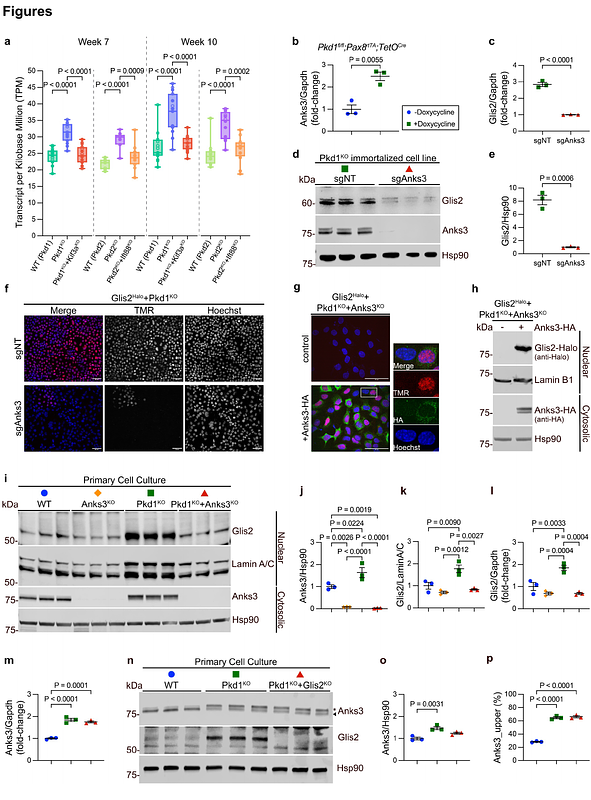Anks3 mediates cilia dependent polycystin signaling and is essential for adult kidney homeostasis

Anks3 mediates cilia dependent polycystin signaling and is essential for adult kidney homeostasis
Wei, Z.; Rehman, M.; Gu, J.; Lerner, G.; Dong, K.; Roy, K.; Cordido, A.; Cai, Y.; Tian, X.; Tham, M. S.; Kanyo, J.; Lam, T. T.; Zhao, H.; Somlo, S.
AbstractThe existence of a cilia-dependent cyst activation (CDCA) pathway underlying autosomal dominant polycystic kidney disease was identified by showing that cyst progression following loss of polycystins is significantly suppressed by removal of structurally intact cilia. We applied translating ribosome affinity purification RNASeq on pre-cystic mouse kidneys to determine a cell-autonomous in vivo translatome associated with CDCA and identified Glis2 as an early effector of polycystin signaling. Here, to discover additional components of CDCA, we used polycystin-dependent Glis2 expression as a functional readout and identified Anks3, from the CDCA pattern translatome, as a candidate cytosolic regulator of polycystin signaling. Anks3 regulates polycystin-dependent Glis2 expression both in vitro and in vivo. Anks3 also undergoes polycystin-dependent changes in phosphorylation state. Inactivation of Anks3 in Pkd1 mouse models suppresses cyst progression, but also results in rapidly progressive kidney injury independent of polycystins. Anks3 inactivation also normalizes a broader spectrum of polycystin-dependent CDCA translatome changes. These findings define Anks3 as a central regulator of cilia dependent polycystin signaling, functioning downstream of cilia and polycystins and upstream of Glis2, and show that Anks3 has broader functions in maintaining renal structural and functional homeostasis.